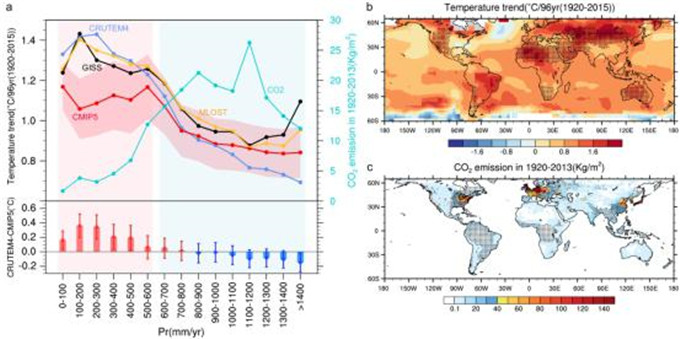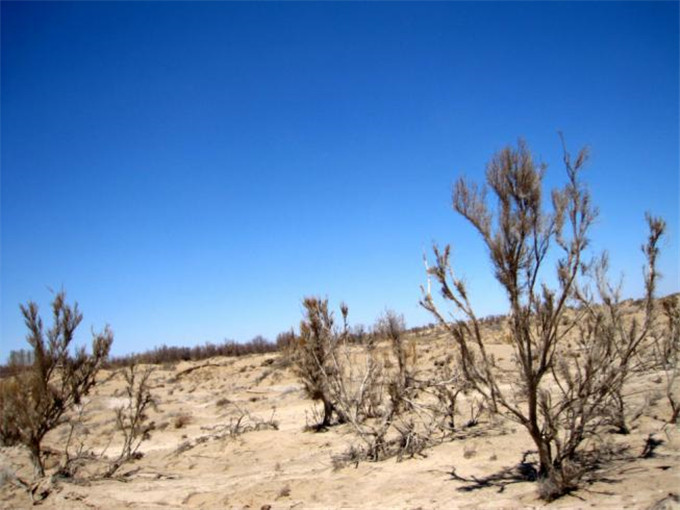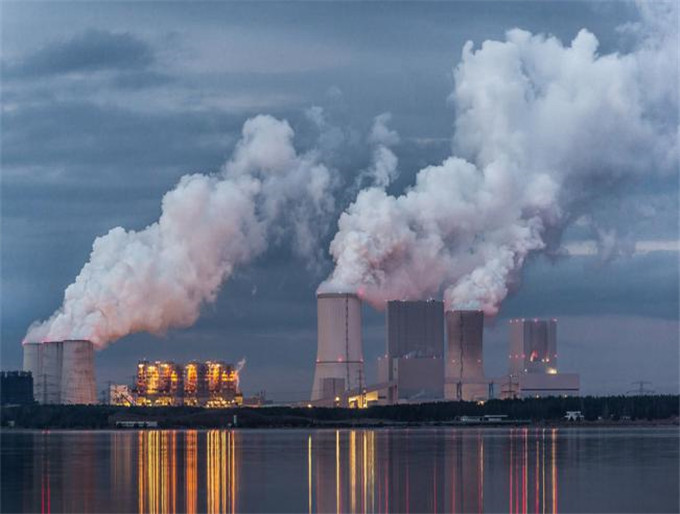International Climate Change top journal Nature Climate Change, published online by lanzhou university professor of atmospheric sciences jian-ping huang (the first and the corresponding author), and other person entitled "Drylands face potential -- kyoui under 2 ° C global warming target," the latest research results, the paper for the first unit of lanzhou university.The study points out that poor and underdeveloped arid and semi-arid regions, despite their negligible anthropogenic emissions of greenhouse gases, suffer far more severe climatic disasters than developed countries in humid regions with high greenhouse gas emissions.To implement the study shows that the proposed by the Paris agreement global target, based on the 2 ° C warming to further curb the catastrophic effects of global warming on arid and arid areas, it is necessary to control the global warming within 1.5 ° C.On the contrary, if the Paris agreement is not effectively implemented, the arid and semi-arid regions will face an even more serious threat in the future.

Study found that the Paris agreement to determine the global goal 2 ° C warming world wet area, and arid and will continue to bear the huge heating risk in arid areas.Its study points out that in the past century, global dry and semi-arid regions have experienced a rise in temperature of 20% to 40% higher than that in wet areas, but their anthropogenic CO emission is only about 30% in wet areas.The study not only found these phenomena from observational and climatological data, but also theoretically proposed the energy balance mechanism that caused these phenomena.Further forecasts show that when the future average global warming up to 2 ° C, wet area only 2.4 to 2.6 ° C temperature rise, while dry 3.2-4 ° C or half arid areas, about 44% more than wet area and the temperature of heating caused by the corn production, surface runoff reduction, worsening drought and climate hazards, such as malaria transmission in arid and also the most serious in arid areas, which will further expand the regional difference of global social and economic development.Will global warming are controlled within 1.5 ° C will greatly ease the drought happened in the degree of disasters may face.

The chart shows the temperature trend and historical carbon dioxide emissions in dry and humid areas.(a) the regional average temperature trend of 1920-2015 of MLOST data (yellow line), CRUTEM4 data (blue line), GISS data (black line) and CMIP5 set average (red line), as well as the change of the regional average carbon dioxide emission flux with the average climatic precipitation (1948-2005) between 1920 and 2013.Bars represent the difference between the CRUTEM4 and CMIP5 set average temperature trends, while error bars and red shadows represent 95% confidence intervals for the 18 patterns.(b) the global distribution of surface temperature trends in MLOST data from 1920 to 2015, with gray shadows representing arid and semi-arid regions.(c) the global distribution of anthropogenic carbon dioxide emissions from 1920 to 2013, with gray shadows representing wet areas.

Arid and semi-arid regions account for 42% of the world's land area, feed 38% of the world's population, and are mainly distributed in poor and backward developing countries, while developed countries are mostly distributed in humid regions.The significant asymmetry between CO emission and heating rate in spatial distribution above indicates that the heating of arid and semi-arid regions is largely caused by greenhouse gas emissions of developed countries in humid regions.The research results of huang jianping's team, published in Nature Climate Change in 2016, have indicated that global arid and semi-arid regions will accelerate expansion in the future, and that the combined effects of Climate warming, intensified drought and population growth will increase the risk of desertification in developing countries. This research is another important progress on the basis of previous studies.This series of studies shows that the international community should pay attention to the inequality between different regions of climate change disasters and responsibilities for climate warming, and pay more attention to the poor and backward arid and semi-arid regions.Developed countries have an obligation to shoulder more responsibilities, honor their commitments, take concrete actions to implement the agreement and push for its implementation.
The research was funded by the national natural science foundation of China (41521004), the discipline innovation and intelligence introduction program for institutions of higher learning (No.B13045) and the key laboratory of semi-arid climate change of the ministry of education.
Results link:
Huang, J., h. Yu, a. Dai Wei, l. Y., Kang (2017), Drylands face potential -- kyoui under 2 ° C global warming target. Nat. Clim. Change, doi: 10.1038 / nclimate3275.
https://www.nature.com/nclimate/journal/vaop/ncurrent/full/nclimate3275.html
 English
>
Scientific Research
>
Research Result
>
Content
Research Result
English
>
Scientific Research
>
Research Result
>
Content
Research Result